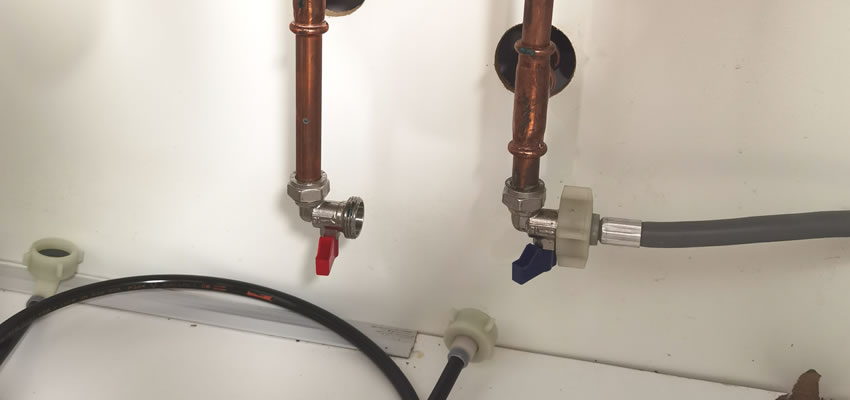What Are Dead Legs? Identifying and Managing Dead Legs in Water Systems
 Look up dead legs on the internet and the first thing you’re likely to find is an explanation of what it feels like to have one following a thigh injury. It’s not quite the sort of thing we’re focusing on in this article, however. Here, we’re looking at a “dead legs” and “blind ends”, potentially dangerous plumbing errors that are frequently found in many building water systems, that if left unchecked, can lead to serious bacterial contamination problems.
Look up dead legs on the internet and the first thing you’re likely to find is an explanation of what it feels like to have one following a thigh injury. It’s not quite the sort of thing we’re focusing on in this article, however. Here, we’re looking at a “dead legs” and “blind ends”, potentially dangerous plumbing errors that are frequently found in many building water systems, that if left unchecked, can lead to serious bacterial contamination problems.
You likely recognise the importance of maintaining a safe water system for all those who use it. If you are a business owner or manage any kind of building, it is your responsibility to make sure the water systems under your control are as safe as possible from the dangers caused by Legionella and other potentially serious waterborne bacteria. Identifying and managing dead legs is part of this responsibility. We’ll go through some of the most common queries arising from this topic below.
A version of this story about dead legs in water systems, how to recognise them and what to do to mitigare risk, first appeared in Legionella Control International’s newsletter. To get it in your inbox, sign up for free here.
What is a dead leg in plumbing?
A dead leg is a length of water pipework leading to a fitting through which water only passes infrequently when there is draw off from the fitting, providing the potential for stagnation.
They can be tricky to spot because you require experience and knowledge of the water system to be able to identify them. To the untrained eye a dead leg looks much like any other length of pipework. It forms part of the overall water system and will lead to a fitting, whether that is a tap, shower head, or similar outlet. The difference between this and any other length of pipework is that a dead leg is only infrequently, or sometimes never used.
This little or unused section of pipework creates a safety issue because the stagnant water conditions it creates make it more likely that Legionella, Pseudomonas aeruginosa and other waterborne pathogens can establish themselves within the pipework. Even though a dead leg will only occasionally be used, it is still connected to the rest of the water system. This in turn means that the entire system could be at risk of colonisation by the bacteria.
A dead leg is a length of water pipework leading to a fitting through which water only passes infrequently when there is draw off from the fitting, providing the potential for stagnation.
Why are dead legs dangerous?
Legionella and similar waterborne bacteria prefer stagnant water to flowing water, since it makes it easier for them to establish themselves, multiply, and spread throughout other parts of the system. A dead leg won’t have water flowing through it like regularly used pipes will. This means the water in the pipe will be at a much higher risk of becoming stagnant.

This also makes it more likely that biofilms (slime) will form – and these provide a source of both nourishment and protection for bacteria, further compounding the problem. Once Legionella (or indeed any other type of waterborne bacteria) establishes itself within part of a water system, it can easily spread further, and is often very difficult to eradicate once this happens. It is always easier to prevent this from happening than to try and remedy it if it does happen. Hence the need to avoid dead legs wherever possible.
What is a blind end or dead end?
A blind end or dead end is a length of water pipework closed at one end through which no water passes. A good example of this would be where a wash hand basin has been removed and the hot and cold supply pipework has simply been capped off to leave pipes filled with stagnating water.
What is the difference between a dead leg and a blind or dead end?
If you are responsible for a water system in any type of building or work setting, you need to be aware of blind ends, also known as dead ends too since they are slightly different from dead legs.
We’ve explained more about dead legs already, so how do blind ends differ from those?
A blind end is identifiable as a run of pipework that is connected to a water system on one end and closed off on the other. Therefore, while it may have gone somewhere in the past, it has essentially been capped off and no longer does.

Blind ends often occur when a room has a change of use or is rearranged. For example, a small shower room may be converted into a storeroom. The shower is removed, and the associated pipework is left in place but capped off, since this seems to be the easiest solution. However, it does not remove the risks associated with the pipework. In fact, as you can see from what we’ve already covered, it increases the risks from legionella and other bacteria.
A blind or dead end is a length of water pipework closed at one end through which no water passes.
How do you overcome dead legs in plumbing?
When dealing with dead legs, your best bet is always to remove them. This also applies to blind ends, which we know are no longer used for any purpose. However, the starting point should always be the Legionella risk assessment for the water system. This should consider those using the water systems, as well as assessing the system itself. In the case of the risk assessment, the mere presence of a dead leg or blind end presents a risk.
Since reasonable steps should be taken to remove or mitigate such risks, you should consider whether you can remove the offending pipework altogether. If it has been capped off, there is still a chance of water getting into the pipe, even though it then has nowhere to go. This means the conditions are then created to allow Legionella, Pseudomonas aeruginosa, and other bacteria to proliferate within that pipe, which may also lead to colonisation of other parts of, or the whole water system.
Therefore, removal of dead legs or blind ends is always the preferred option. Guidelines suggest that the maximum length of a dead leg or pipe should be no more than 1.5 times its width. You can see how this does not permit long pipes in any area of a building.

How to deal with little used water outlets?
Of course, there are situations where you may not be able to remove the dead leg. We know from the above description that a blind end is no longer used, whereas a dead leg may only occasionally be used. In the latter case, you may only need to use it every week or two. So, while it remains unused in the interim, it does still need to be there and cannot therefore be removed.
In this case, steps must be taken to mitigate the risk associated with leaving that stretch of pipework unused for extended periods of time. Let’s take the case of a washroom that is only occasionally used but would pose an issue if it were removed altogether. This might contain a washbasin and perhaps a shower.
The best approach here would be to flush through the pipework and outlets regularly enough to prevent stagnant water from pooling in the pipes. It would also make it much more difficult for Legionella and other waterborne bacteria to form and colonise there. Regular flushing will also reduce the possibility of biofilms forming, which as we know behave as a source of protection and nutrients for any bacteria present within the pipe.

How often should dead legs be flushed to control Legionella?
According to the UKs Health and Safety Executive, the ideal scenario is to remove all pipework that is not in use. However, if you have dead legs that you do still need to use, albeit infrequently, you should flush them through every week. All taps, outlets, and shower heads must be thoroughly flushed weekly to help manage the presence of Legionella and other bacteria. You should also clean and disinfect shower heads and associated equipment every three months at the minimum, ideally more often. Descaling should also be part of the process in hard water areas.
Avoiding dead legs is better than dealing with raised Legionella levels
A professional Legionella risk assessment can help identify any potentially dangerous dead legs or blind ends in your water system. You can then use this information to determine whether removal is possible – and decide what you must do if you need to keep certain dead legs in operation. By focusing on the right course of action, you can maintain a high level of workplace safety and water quality throughout the water systems you are responsible for.
Leading water safety specialists
The experts at Legionella Control International support those responsible for the control of waterborne pathogens including legionella workplace environments, helping them to protect people and so meet their health and safety obligations in this specialist area.
We are experienced in the role of Authorising Engineer (Water) and deliver expert Legionella risk assessments, water quality testing, independent compliance auditing, water safety training and other risk management services that help keep staff and others safe.
If you would like to speak with one of our water safety specialists about managing your Legionella risks call us today on 0330 223 36 86 or contact us here …


